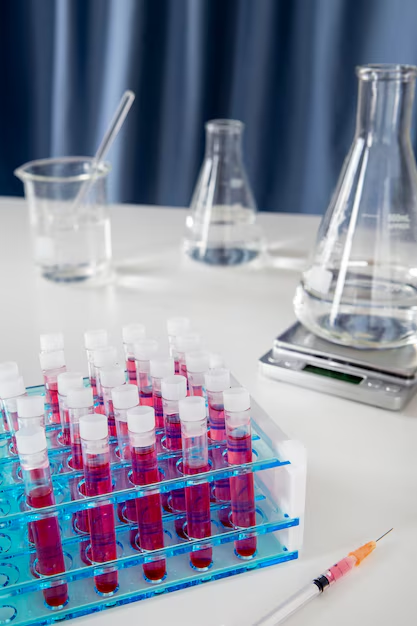Don't miss our holiday offer - up to 50% OFF!
🧪 How to Safely Store Research Chemicals in Your Lab

| how to store research chemicals safely |
Proper storage of research chemicals is crucial for maintaining safety, chemical integrity, and regulatory compliance in any laboratory. Whether you’re working in an academic setting, a private lab, or industrial research, following best practices for chemical storage can help you prevent accidents, contamination, or costly damage.
1. Understand the Chemical’s Classification
Before storing any research chemical, consult the Safety Data Sheet (SDS) and Certificate of Analysis (COA). These documents provide vital information about:
- Storage temperature
- Light sensitivity
- Reactivity with air, moisture, or other chemicals
- Required containment type (glass, plastic, metal)
Proper classification helps you determine how and where to store each compound.
2. Label and Segregate Properly
Clearly label every container with:
- Chemical name and formula
- Date of receipt/opening
- Hazard symbols (flammable, corrosive, etc.)
- “For Research Use Only” notice
Always segregate incompatible chemicals:
- Acids away from bases
- Oxidizers away from flammables
- Water-reactive substances stored in a dry environment
This prevents dangerous chemical reactions in case of leaks or spills.
| research chemical storage guidelines |

3. Maintain Appropriate Storage Conditions
Use proper chemical-grade cabinets, fridges, or freezers to store:
- Temperature-sensitive materials (e.g., –20°C or –80°C chemicals)
- Flammable chemicals in fireproof storage
- Light-sensitive chemicals in amber bottles or opaque storage
Ensure proper ventilation in storage areas to avoid fume buildup.
4. Follow Safety Compliance Guidelines
Use secondary containment trays to catch spills. Equip your storage space with:
- Fire extinguishers and first-aid kits
- Eye wash stations and fume hoods (if applicable)
- Spill kits for acid/base/solvent cleanup
Keep a chemical inventory log and routinely check expiry dates.
| proper storage of lab chemicals |
5. Limit Access and Train Personnel
Only trained personnel should handle and access stored research chemicals. Implement:
- Access control (lockable storage for high-risk chemicals)
- Regular staff training on chemical handling and emergency procedures
- Clear signage and safety instructions in storage areas
This minimizes human error and ensures lab-wide compliance with chemical safety regulations.
| chemical storage safety tips for labs |
Final Thoughts
Safely storing research chemicals is not just about protecting materials — it’s about ensuring a secure, compliant, and productive research environment. By understanding chemical classifications, maintaining clear labeling, using correct containment, and prioritizing safety, you reduce risk and extend the usability of your compounds.
Safety first. Science second — because one ensures the success of the other.
